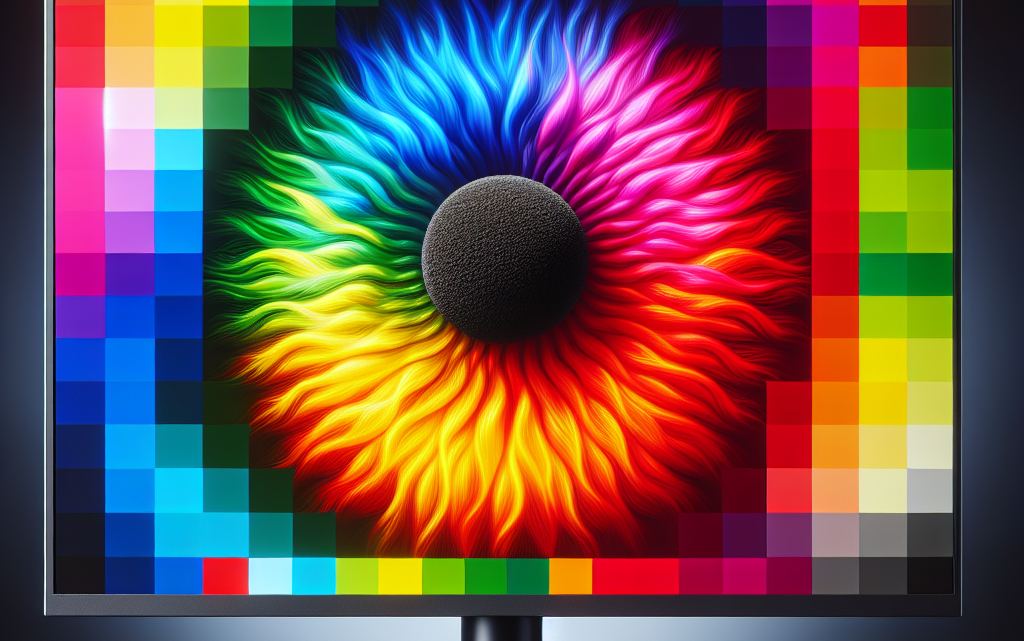Understanding Dead Pixels in Plasma Monitors
Plasma monitors provide stunning visuals thanks to their ability to generate vibrant colors and deep blacks. However, like other display technologies, they are susceptible to certain issues, including dead pixels. A dead pixel is a point on the screen that does not display any color, appearing as a tiny dark spot. This can be problematic, especially when it disrupts the viewing experience. In this article, we will delve deeply into what dead pixels are, their causes, how to identify them, and potential remedies.
What is a Dead Pixel?
A dead pixel is a single pixel on a display screen that fails to change color and remains black or unresponsive. Essentially, it’s a pixel that does not illuminate, making it appear as a tiny dark spot against the backdrop of the screen’s vibrant visuals. Dead pixels are usually the result of manufacturing defects or issues that arise over time.
Dead Pixel Types
Understanding the types of dead pixels can help in diagnosing and potentially repairing the affected screen. The main types of dead pixels are:
- Stuck Pixels: These pixels remain fixed on a particular color such as red, green, or blue.
- Hot Pixels: Pixels that constantly remain white due to being always “on.”
- Dead Pixels: Pixels that do not light up at all, displaying no color and remaining black.
Causes of Dead Pixels
Several factors can contribute to the occurrence of dead pixels in plasma monitors. Identifying these causes can help in pinpointing and addressing the issue more effectively.
Manufacturing Defects
One of the most common causes of dead pixels is manufacturing defects. Despite rigorous quality control measures, it is still possible for a few defective pixels to make their way into the final product.
Physical Damage
Plasma monitors are delicate devices. Physical impacts, pressure, or mishandling can damage the pixels, leading to dead pixels or other display issues.
Prolonged Usage
Extended periods of usage can result in wear and tear on the screen components. This can cause some pixels to stop functioning over time.
Identifying Dead Pixels
Identifying dead pixels early can be crucial for warranty claims or taking timely corrective actions. Here’s how you can identify them:
- Visual Inspection: Perform a thorough visual inspection of the screen in different background colors (white, black, red, green, and blue) to identify any non-responding pixels.
- Dead Pixel Test Software: Utilize specialized software that can help highlight dead pixels effectively. These tools typically cycle through various colors to expose non-functioning pixels.
The table below highlights some common symptoms and methods to identify dead pixels:
| Symptom | Identification Method |
|---|---|
| Tiny dark spot | Visual inspection on a white background |
| Unchanging color | Visual inspection and dead pixel test software |
| Always white | Visual inspection on a black background |
Potential Remedies for Dead Pixels
While some dead pixels may be beyond repair, there are potential remedies worth trying. Here are a few methods:
Pressure Method
Gently applying pressure to the affected area can sometimes revive a dead pixel. Use a soft cloth and press gently without causing further damage.
Pixel Fixing Software
Some software applications are designed to fix stuck or dead pixels by rapidly cycling colors. This method works by unfreezing stuck pixels or stimulating non-responsive pixels into action.
Screen Replacement
In cases where dead pixels cannot be revived, replacing the entire screen or monitor might be the only viable solution.
Preventive Measures
Taking preventive steps can help longer the lifespan of your plasma monitor and mitigate the occurrence of dead pixels.
- Proper Handling: Avoid putting excessive pressure on the screen, and handle the monitor with care during transport or installation.
- Regular Cleaning: Use a microfiber cloth to clean the screen gently, reducing the risk of damage from dirt or grime.
- Avoid Prolonged Static Images: Continuous display of static images could lead to screen burn-in or dead pixels. Use a screensaver or turn off the monitor when not in use.
Conclusion
Understanding dead pixels in plasma monitors can help you identify and address this common issue more effectively. While dead pixels are inevitable in some cases, proactive maintenance and careful handling can mitigate their occurrence. Knowing the potential remedies also provides options to attempt repairs before considering screen replacements. Keep this guide handy for a comprehensive understanding of dead pixels and how to handle them.

